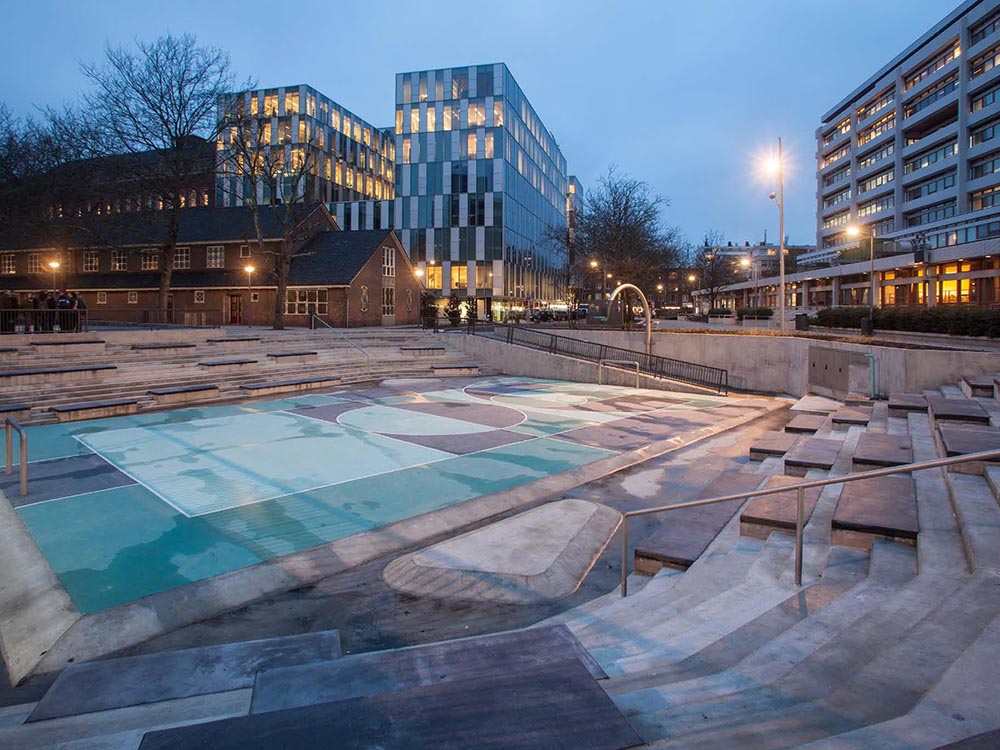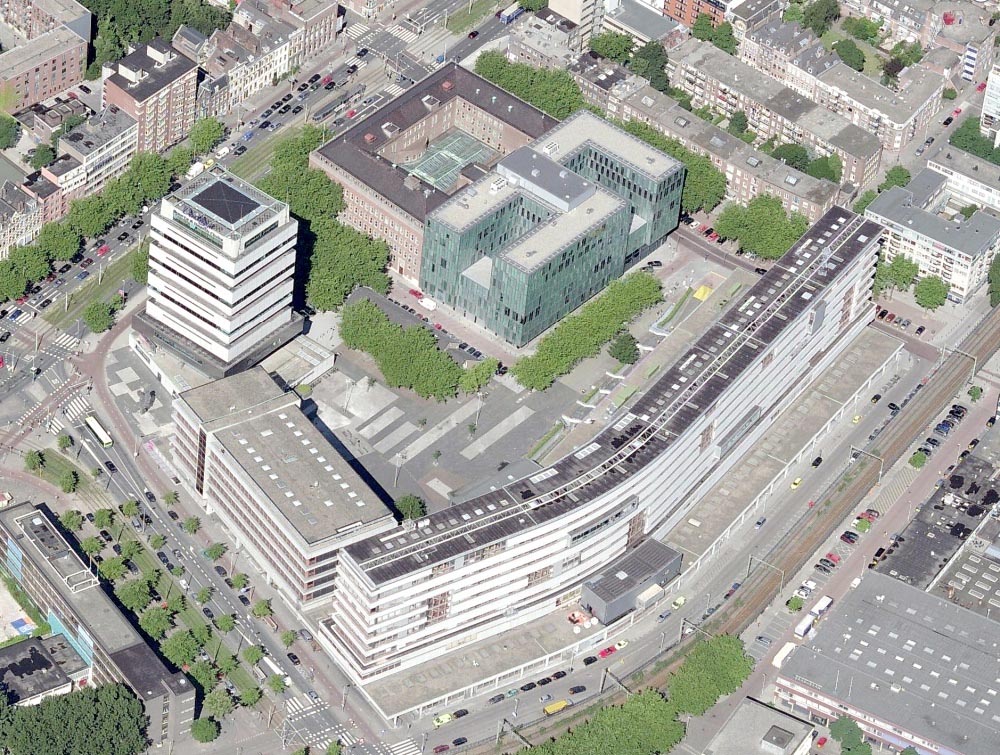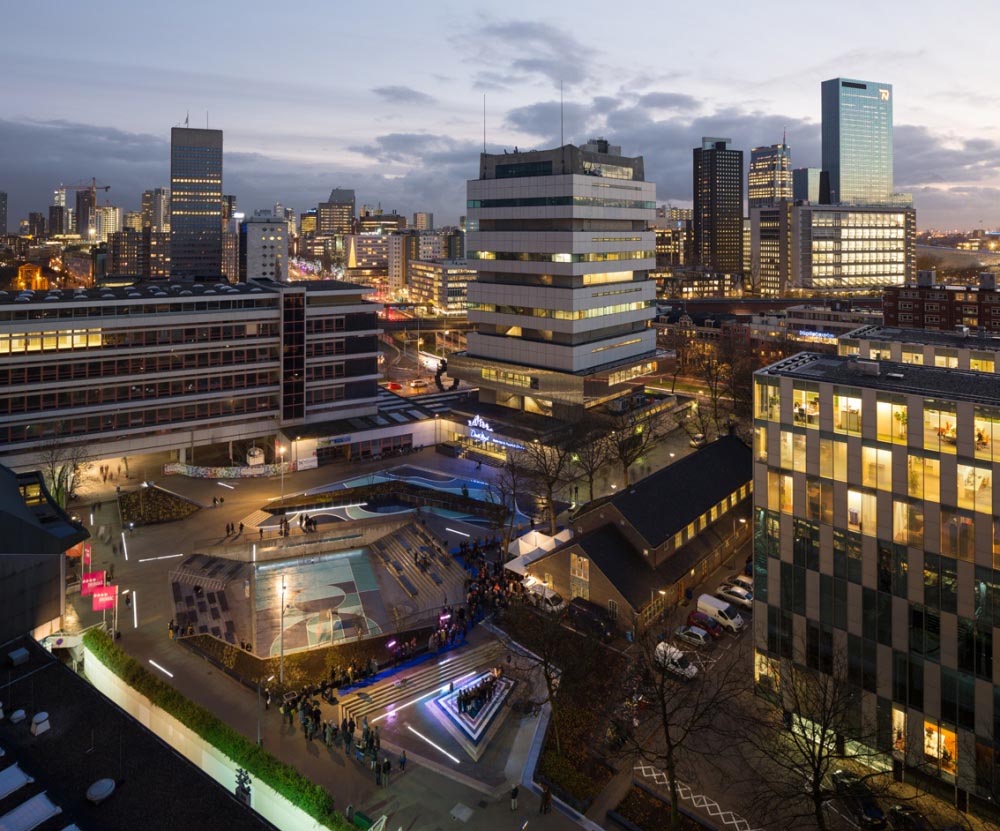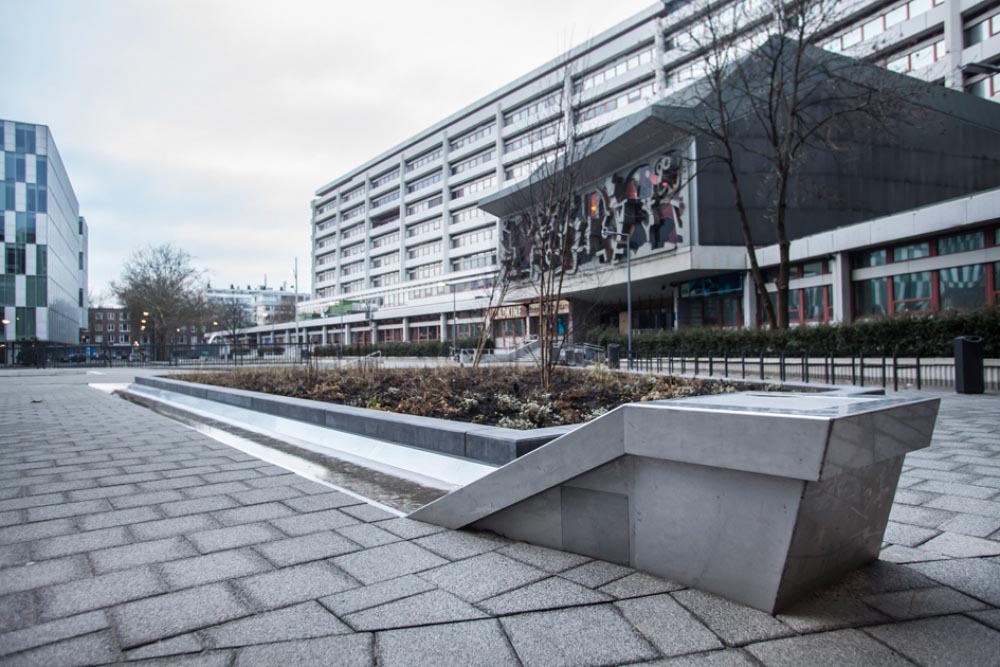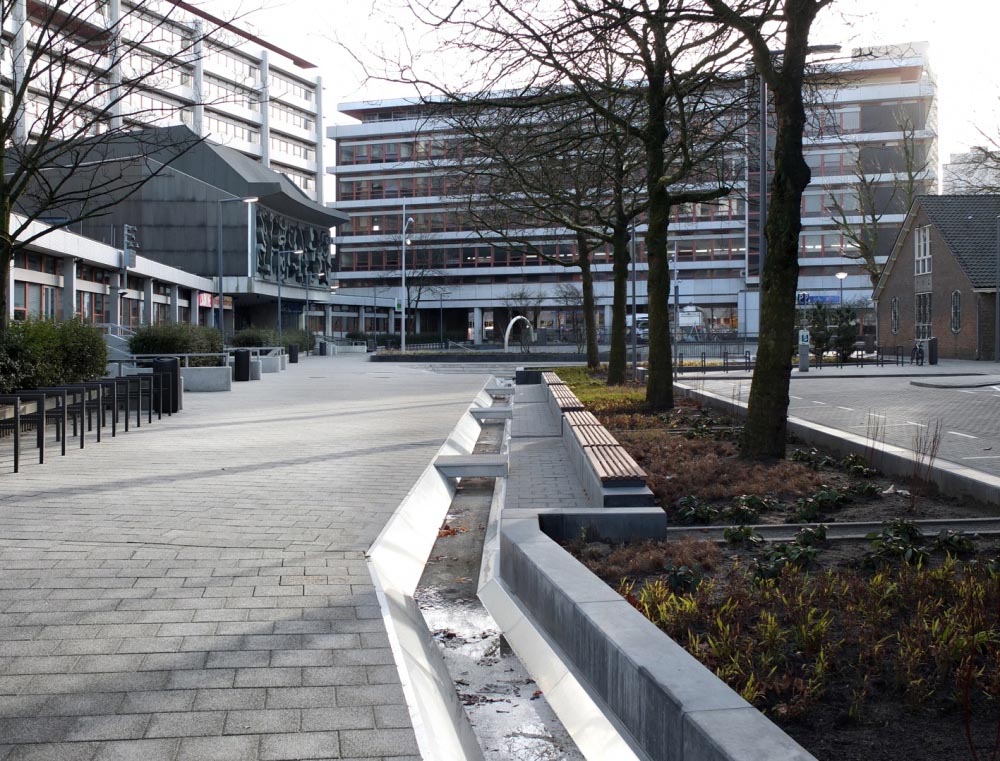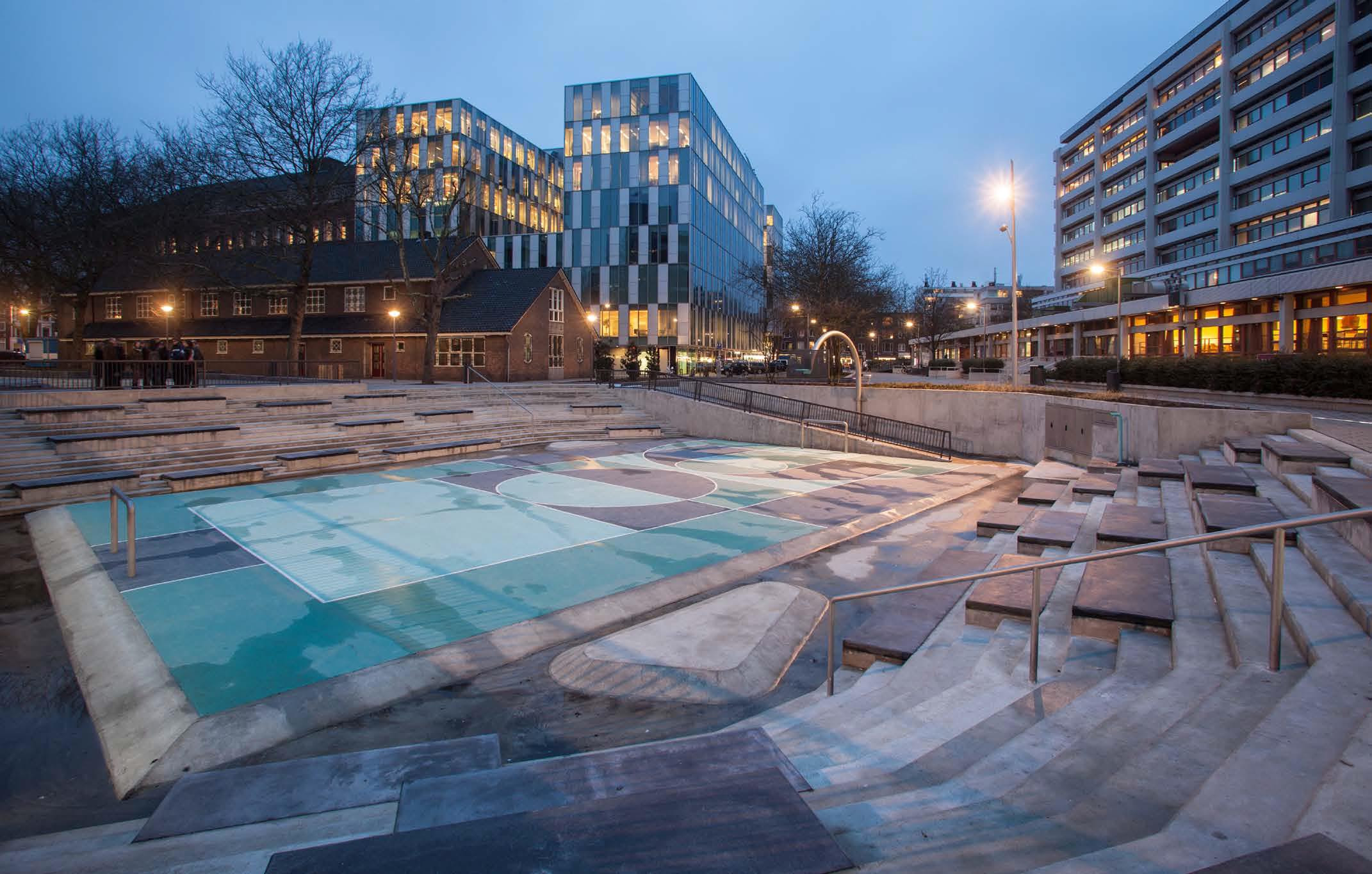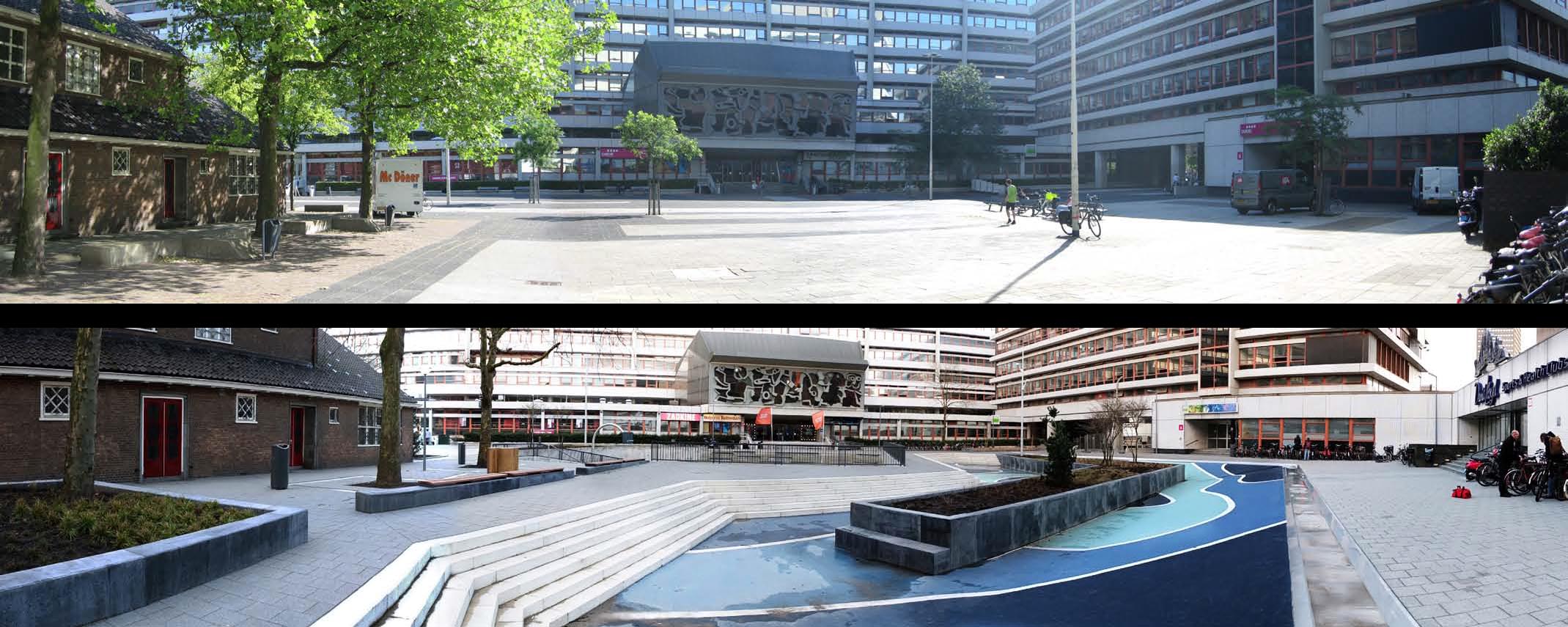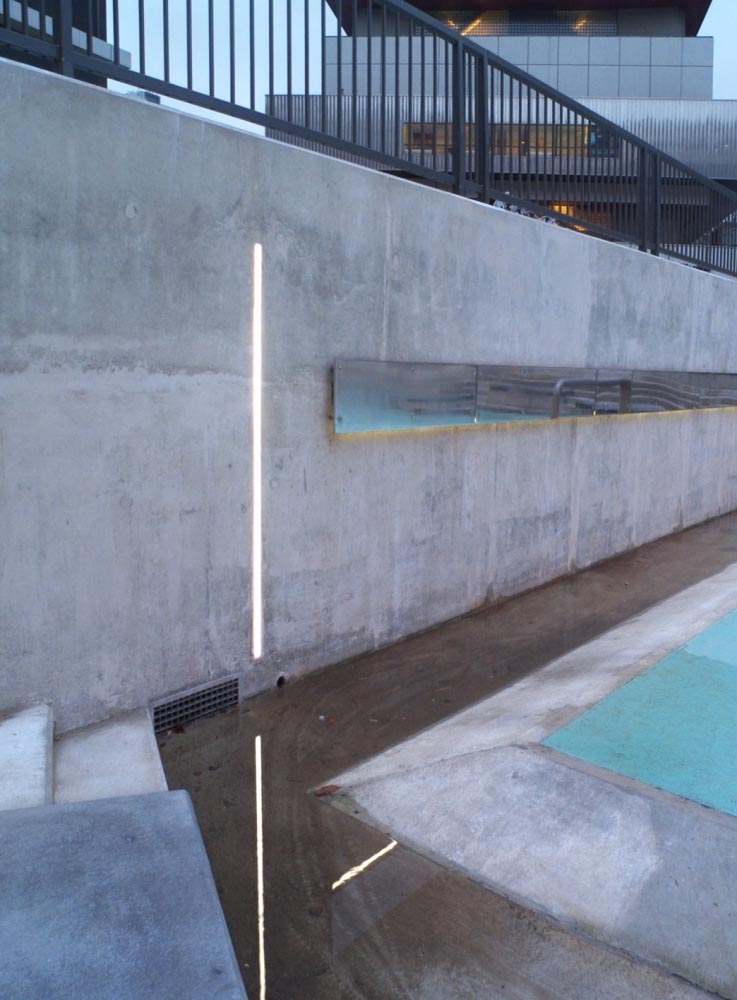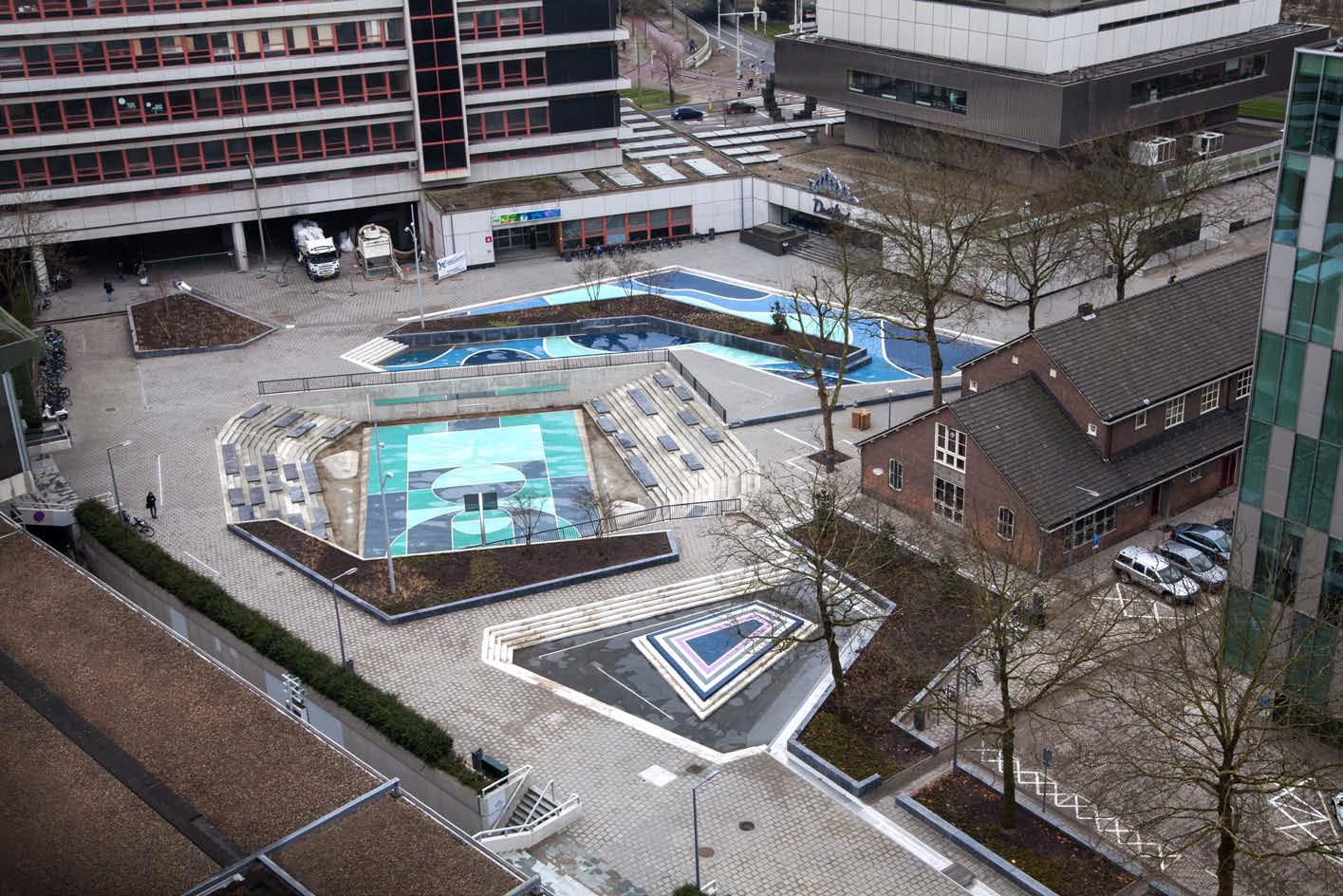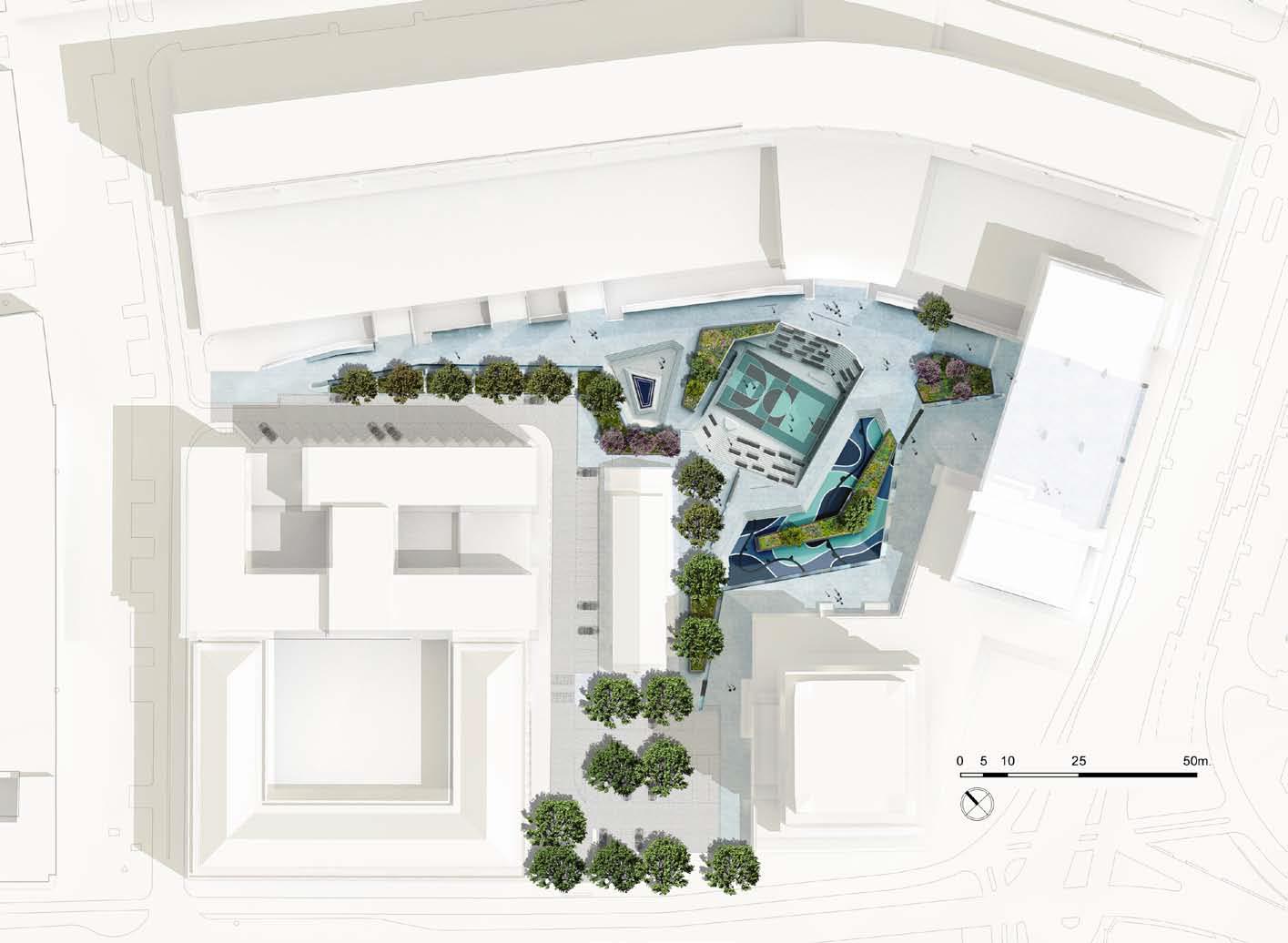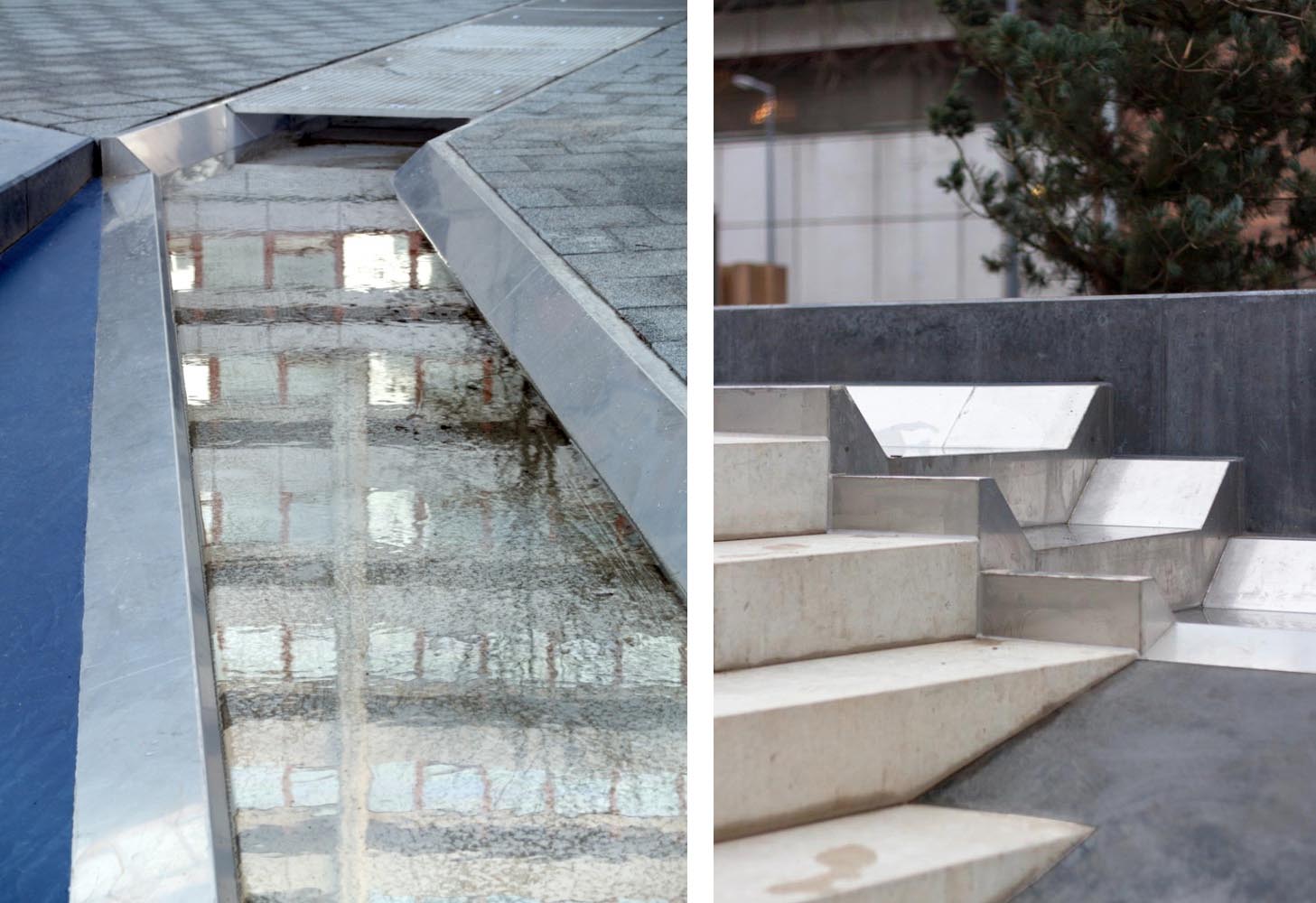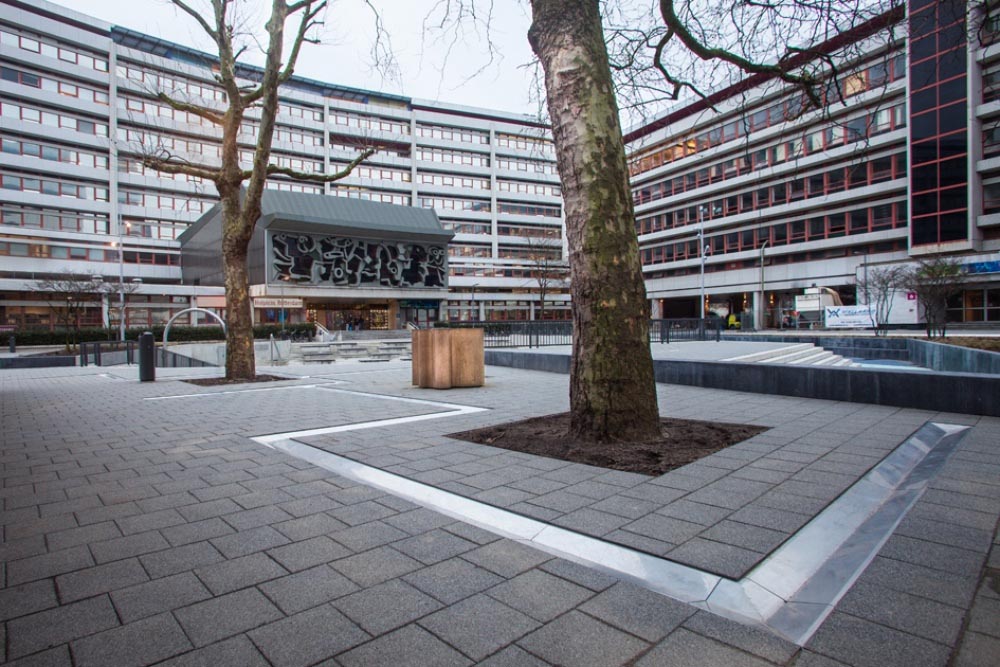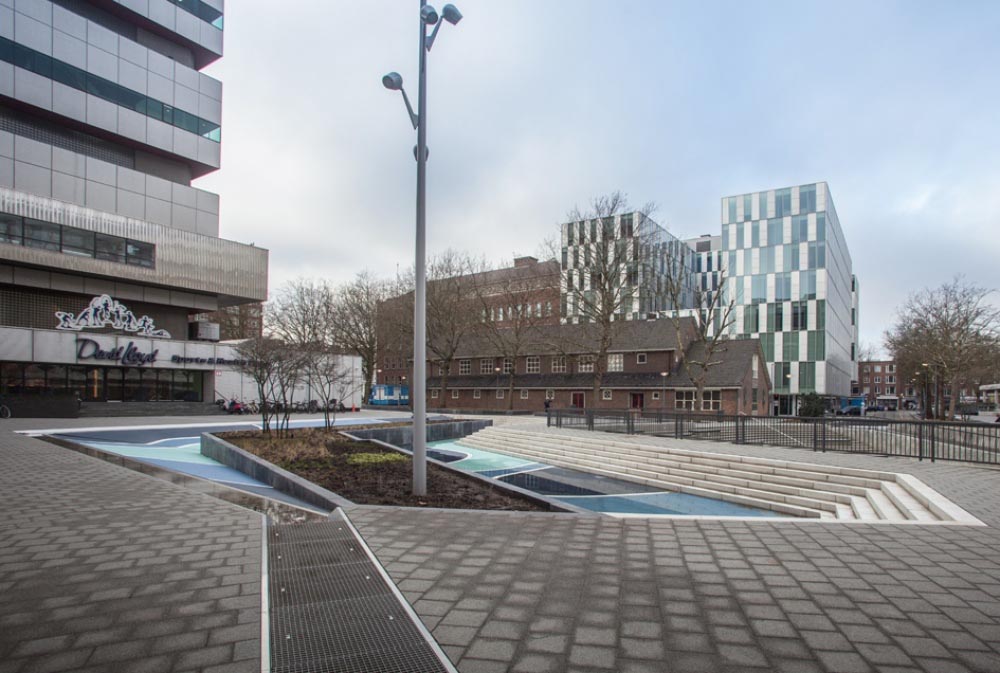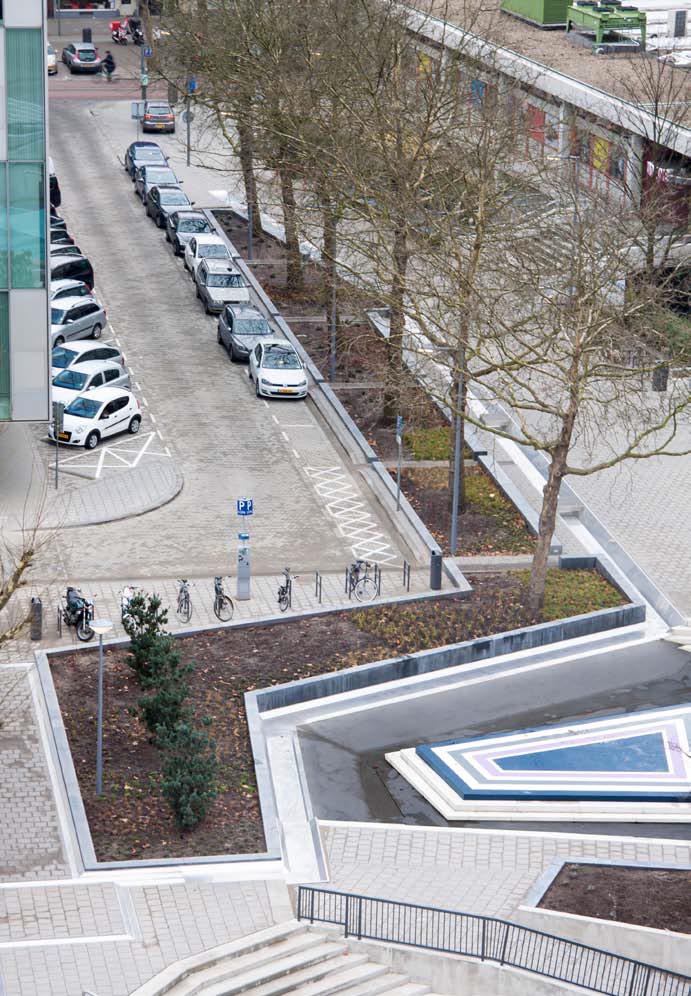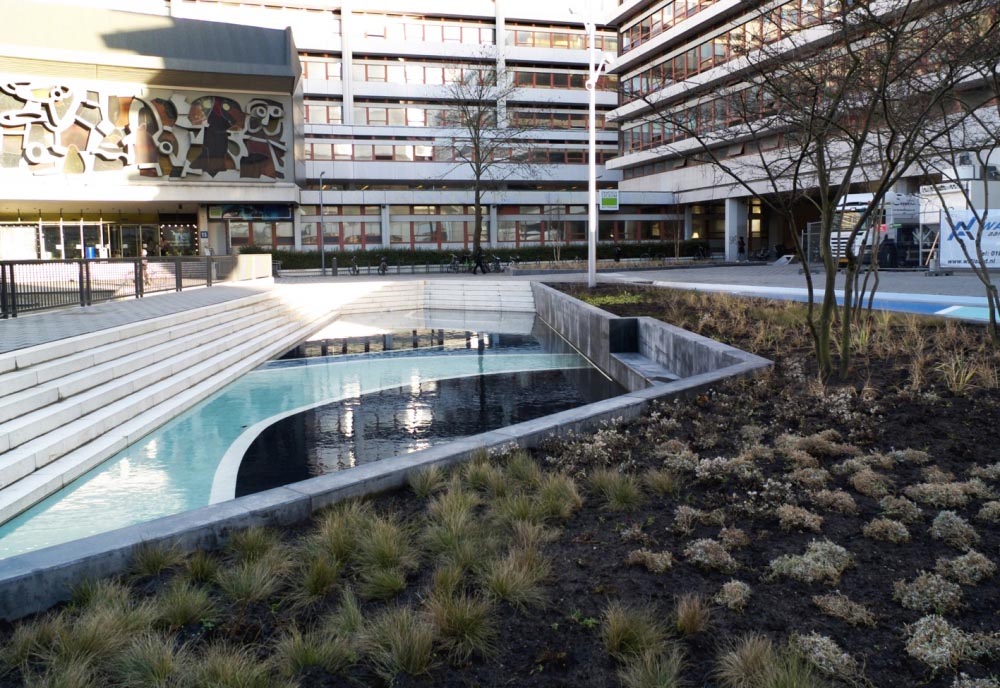Previous state
Lying between Agniesebuurt, a densely populated neighbourhood dating from the nineteenth century, and the modern centre of Rotterdam, a cluster of different kinds of buildings surround an empty space. Most of them, either tower blocks or long buildings, were constructed in the second half of the twentieth century. One of the latter type, work of the renowned Dutch architect Hugh Maaskant, a lineal block some two hundred metres long, houses offices, a theatre, gymnasium and two schools, the Graphic Lyceum and Zadkine College. There is also a nineteenth-century church with a dark brick façade and pitched roof. For all its centrality and intensity of use, the zone as a whole is marked by the usual defects of urban growth in the past few decades. The typical polygonal structure, a haphazard grouping of separate pieces, has left excessive interstitial space between the buildings while the open space was uninteresting and unused. The central space bearing the name of Benthemplein was basically a square in name only. Only a conspicuous line of trees with luxuriant foliage, thanks to the regular rainfall, softened the emptiness of the place when the cold weather had not stripped them of their leaves.
Aim of the intervention
It is precisely Rotterdam’s heavy rainfall that is a matter of concern for the Rotterdam City Council, as many parts of the city are flooded every year. For some years now, it has been promoting the construction of underground tanks to collect and hold the rainwater. Nevertheless, these structures are not cheap and, since they are frequently invisible, their effectiveness is not very evident in the eyes of taxpayers. The municipal administration has therefore adopted a strategy whereby new water-storage systems have been located on the surface in order to make them explicit and even to contribute towards the environmental quality of urban space, as well as strengthening neighbourhood identities and offering agreeable leisure spaces to the citizens.
In accordance with this plan, four and a half million euros were earmarked in 2011 for the construction of a rainwater storage system in Benthemplein. Besides its hydraulic function, the work was to give meaning to the space and endow it with attractive features that would appeal to users of the surrounding buildings. To this end, a participative process was devised, bringing together teachers and students from the Graphic Lyceum and Zadkine College, theatregoers, users of the gymnasium, members of the congregation of the nearby church and residents from the Agniesebuurt neighbourhood. Three workshops were organised with a view to reaching agreement on a programme of needs and to envisage the kind of atmosphere users desired. Everyone agreed that the place would gain in dynamism if young people led the way in the process, and if it were influenced by the seasonal cycles of water.
Description
Now refurbished, Benthemplein is known as “Waterplein” (Water Square) because of the installation of three pools which fill up when it rains. However, for a good part of the year the pools are dry and can be used as recreational spaces. The largest and deepest pool occupies the centre of the square and is only filled when there is a lot of heavy rain, which turns a “water wall” on one of its four sides into a spectacular, abundant cascade. When it is empty it is used as a playing area for football, basketball or volleyball, and it has two rows of tiered seating so that members of the public can watch the matches. On the northern side of the square, just in front of the main entrance of the church, there is a smaller pool, trapezoidal in shape, and also with tiered seating, as well as a central island which can be used as a stage for dancing. When the third pool is dry, it is used by people who practice their skills on different kinds of wheels and anyone who wishes to watch them.
Large stainless steel gutters embedded in the pavement channel rainwater falling on the square in the direction of the three ponds. These are strongly constructed and deliberately oversized so that skateboarders can use them. One of them rises above ground level to act as an overflow outlet for the “rain well” which collects water from the roof of one of the nearby buildings. Next to the church, there is an open-air baptistery which also feeds into the network of water channels. All the water-bearing elements have a shiny metallic surface, while the ponds are finished in different tones of blue. The pre-existing trees remain in their former places but are now surrounded by garden plots with tall grasses, flowers and continuous concrete benches.
Assessment
When things are working well, urban infrastructure frequently goes unnoticed since it remains in the background and is merely functional. This is understandable when it takes the form of facilities in central spaces that are full of meaning and uses, but it seems paradoxical in dull, empty spaces which really need to have things happening in them. The “Water Square” is a felicitous example of the benefits that can accrue when public facilities are explicit in their utility, and when they even free the space from being limited to just one function. Indeed, thanks to their versatility and the variety of guises they take on over the year, the Benthemplein ponds bring dynamism and meaning to the space and invite people to come and enjoy it.
David Bravo │ Translation by Julie Wark
[Last update: 12/06/2020]


